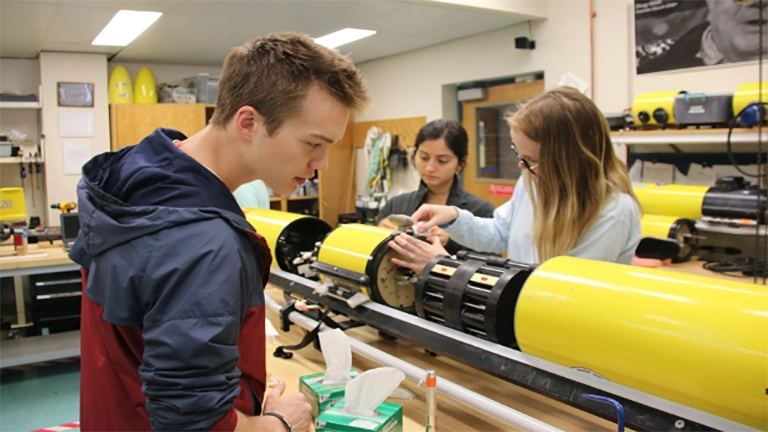The Sentinel Mission is poised to change the world in many positive ways.
- Demonstrate the newest-generation Teledyne by circumnavigating the world’s oceans pushing the boundaries of ocean observation and build an ocean of data.
- Inspire communities across the world to participate in the global conservation through expanding ocean literacy, education, and policy in order to create an inclusive and equitable ocean for all
- Improve our understanding of the evolving ocean in the face of climate change
- Create a global team from diverse cultures around the world to help make the Sentinel Mission a reality
Our motivation is grounded by the United Nations Ocean Decade. The UN Ocean Decade consists of 10 challenges. The idea is promote sustainable practices. The Ocean Decade challenges include topics such as decreasing pollution, fixing ecosystems, and protecting communities from climate change (full list is here).
Gliders can play a crucial role in the Ocean Decade. Countries across the world set a wide variety of sustainability goals for the Ocean Decade which require different types of data to support their implementation. Thanks to the versatility of gliders, they can be retrofitted with different sensors and scientific instruments to collect ocean data relevant to multiple societal needs on a single deployment. Glider data networks combined with robust ocean models will revolutionize our ability to understand and forecast the ocean conditions to support society.

From global concerns such as garbage patches and climate change to regional environmental concerns like coral reef ecosystem collapses, gliders are becoming a frontline tool for measuring the issues our oceans face. Here are a short handful of ways in which gliders are actively being used to support global research initiatives:
- Gliders use dissolved oxygen sensors to measure hypoxic conditions in the Gulf of Mexico to investigate the cause of major fish killings, which negatively impact commercial fishing industries and ocean ecosystems
- Chlorophyll sensors used to detect phytoplankton density help gliders measure biological activity in different regions to research climate impacts on ecosystem productivity
- Temperature sensors on gliders set beneath hurricane and typhoon storm cells help measure the speed and intensity in real time to better forecast their impacts
- pH sensors on gliders help measure ocean acidification in crucial environments such as oyster beds and coral reefs to better understand the rates at which our oceans are acidifying
Not only do gliders support short duration projects through their mission deployments, but the data they collect also contributes towards long-term data collection projects which help build a rich informational map of how our oceans are changing. Long-term and continuous data collection infrastructure in the oceans is how we can both address the many problems our oceans face today and also prevent disasters in the future.
